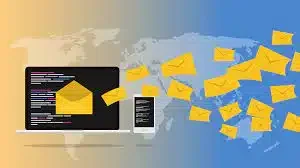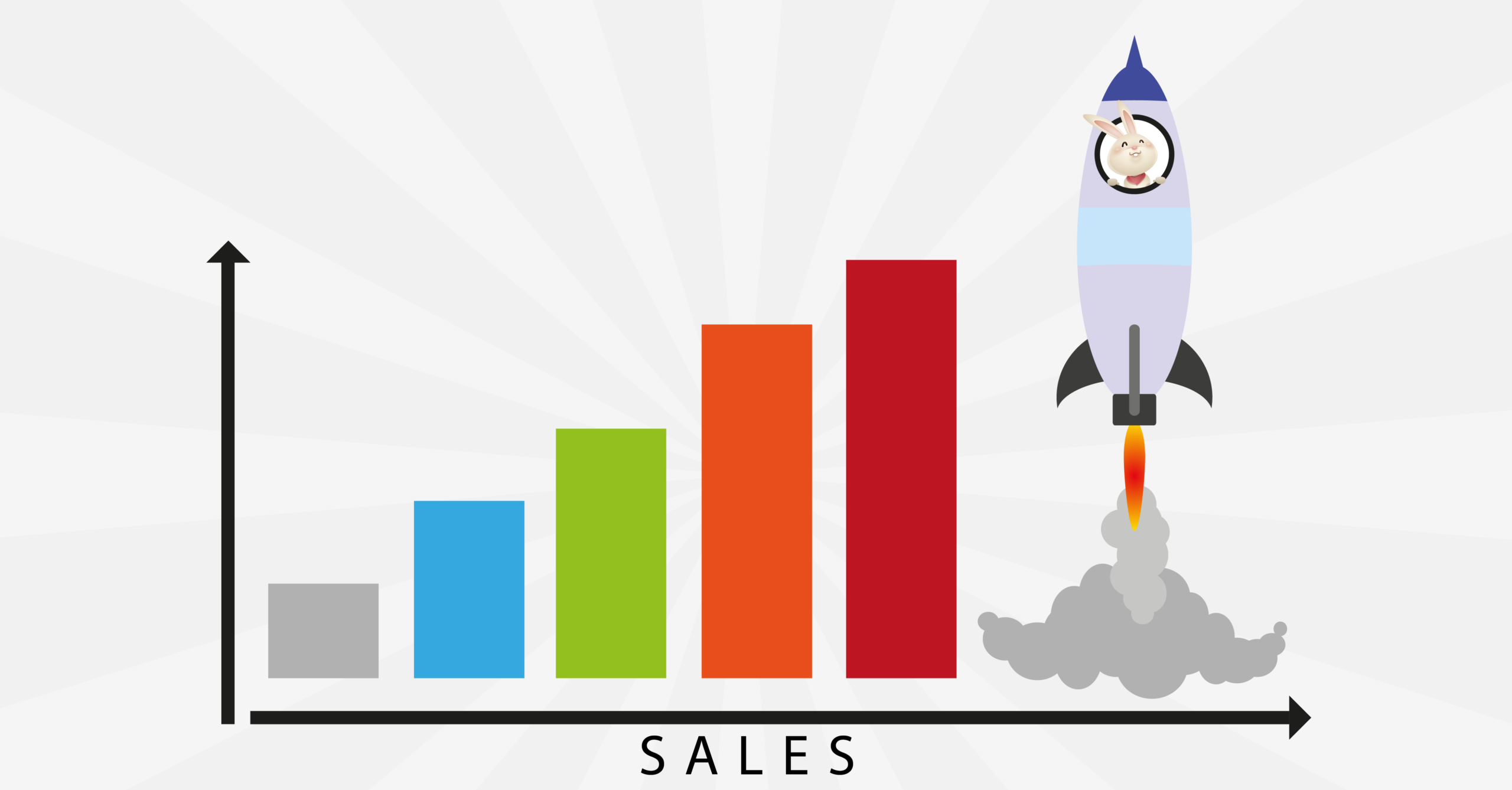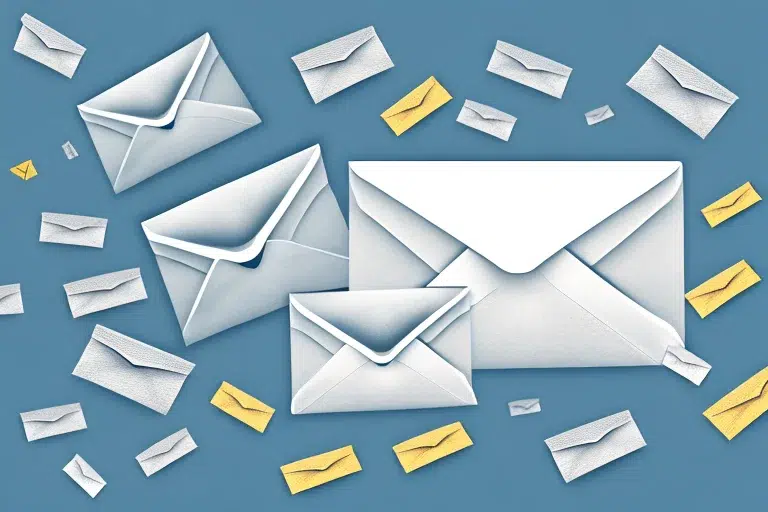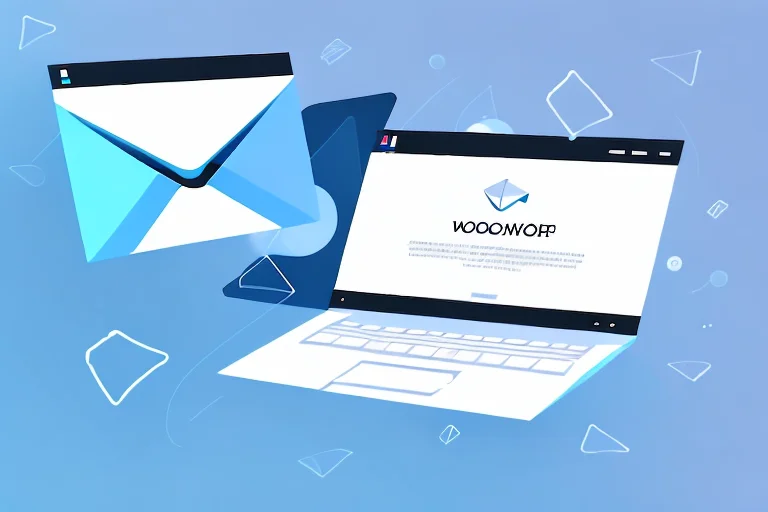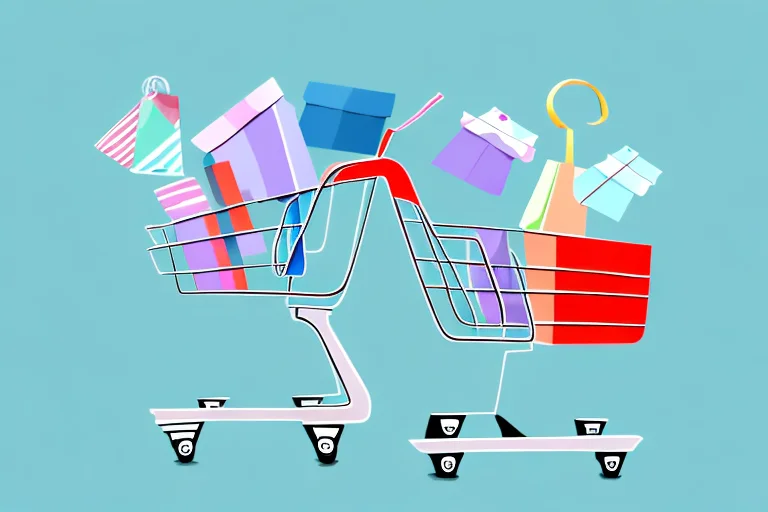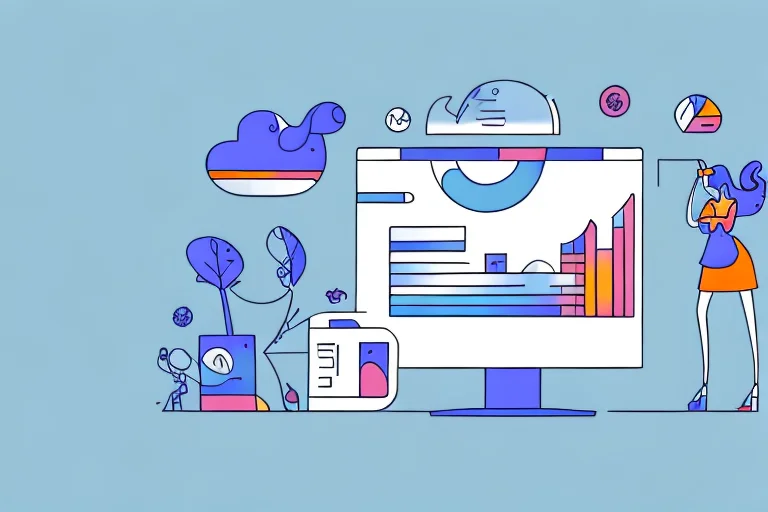In today’s competitive e-commerce landscape, finding effective strategies to boost your Shopify sales is crucial. One overlooked yet incredibly powerful tool is email marketing. By leveraging the potential of email campaigns, Shopify sellers can engage with their audience, build brand loyalty, and ultimately drive conversions. In this article, we will explore the importance of email marketing for Shopify and provide you with essential strategies to maximize its impact on your business.
Understanding the Importance of Email Marketing for Shopify
When it comes to running a successful Shopify store, email marketing plays a pivotal role. It allows you to establish direct communication channels with your customers, nurture relationships, and create personalized experiences. Let’s delve into why email marketing is an indispensable part of any e-commerce strategy.
The Role of Email Marketing in E-commerce
Email marketing serves as a direct link connecting you to your customers. It enables you to send targeted messages, product updates, and offers right to their inboxes. Unlike social media algorithms or search engine rankings, email marketing provides you with complete control over your communication and ensures that your message reaches the right people.
Furthermore, email marketing allows you to segment your audience based on various factors such as purchase history, demographics, and engagement levels. This segmentation enables you to tailor your messages and offers to specific customer groups, increasing the chances of conversion and customer satisfaction.
In addition to segmentation, email marketing also offers the advantage of automation. With the help of automation tools, you can set up personalized email sequences that are triggered by specific customer actions or events. This automation not only saves you time but also ensures that your customers receive timely and relevant messages throughout their journey with your Shopify store.
Why Shopify Sellers Need Email Marketing
Shopify sellers, especially those operating in a crowded market, can benefit immensely from email marketing. It allows you to stay top-of-mind with your customers, increase brand recognition, and foster customer loyalty.
One of the key advantages of email marketing for Shopify sellers is the ability to create personalized experiences for your customers. By analyzing their purchase history, browsing behavior, and preferences, you can send targeted recommendations and offers that resonate with their individual needs. This level of personalization not only enhances the customer experience but also increases the likelihood of repeat purchases and customer loyalty.
Moreover, email marketing has consistently shown high conversion rates, making it an indispensable tool for driving sales. According to studies, email campaigns have an average conversion rate of 4.24%, which is significantly higher compared to other marketing channels. By leveraging email marketing, Shopify sellers can effectively showcase their products, highlight special promotions, and create a sense of urgency that encourages customers to make a purchase.
Another advantage of email marketing is its cost-effectiveness. Compared to other marketing channels such as paid advertising or influencer partnerships, email marketing allows you to reach a large number of customers at a relatively low cost. With the right strategy and compelling content, you can achieve a high return on investment and maximize your marketing budget.
In conclusion, email marketing is a powerful tool that every Shopify seller should utilize. It provides direct communication with customers, enables personalization and segmentation, and drives sales and customer loyalty. By incorporating email marketing into your e-commerce strategy, you can enhance your Shopify store’s success and stay ahead in the competitive online marketplace.
Setting Up Your Email Marketing Strategy
Now that we understand the significance of email marketing, let’s discuss how to set up an effective strategy for your Shopify store.
Email marketing has become a crucial tool for businesses to connect with their customers and drive sales. With its ability to reach a wide audience and deliver personalized messages, email marketing can help you build brand loyalty and increase customer engagement.
However, setting up an email marketing strategy requires careful planning and consideration. In this guide, we will walk you through the essential steps to get started and ensure the success of your email campaigns.
Choosing the Right Email Marketing Platform
The first step in establishing your email marketing strategy is selecting the right platform. Consider factors such as ease of use, automation capabilities, segmentation options, and integration with your Shopify store.
Popular email marketing platforms like Mailchimp, Klaviyo, and Omnisend offer seamless integration with Shopify and provide a range of features to enhance your campaigns. These platforms allow you to create visually appealing emails, automate your campaigns, and track the performance of your emails through detailed analytics.
Additionally, some platforms offer advanced segmentation options, allowing you to divide your email list into specific groups based on various criteria. This segmentation enables you to send targeted emails to different customer segments, increasing the relevance and effectiveness of your campaigns.
Building Your Email List
An email marketing campaign is only as effective as your subscriber list. Building a strong and engaged email list should be one of your top priorities.
There are several strategies you can employ to grow your email list. One effective method is optimizing your website’s sign-up forms. Place these forms strategically on your website, making them visible and easily accessible to visitors. You can also offer incentives like exclusive discounts or free resources in exchange for signing up, providing an extra motivation for visitors to join your email list.
Furthermore, promoting your newsletter through various channels can help attract new subscribers. Utilize social media platforms, blog posts, and guest articles to spread the word about your newsletter and encourage people to subscribe.
Remember, it is crucial to obtain explicit consent from your subscribers and ensure compliance with applicable data protection regulations, such as GDPR. Implementing a double opt-in process and including a clear privacy policy in your sign-up forms can help you establish trust and maintain compliance.
Segmenting Your Email List for Better Targeting
Segmentation is essential for delivering personalized and relevant messages to your customers. By dividing your email list into specific segments, you can tailor your content, offers, and recommendations to the unique characteristics and preferences of each group.
Consider segmenting your email list based on factors such as purchase history, browsing behavior, demographics, and engagement levels. For example, you can create segments for customers who have made recent purchases, customers who have abandoned their carts, or customers who have shown interest in specific product categories.
Segmentation allows you to send targeted emails that resonate with each segment, increasing the likelihood of conversion. By delivering personalized recommendations, exclusive offers, and relevant content, you can nurture customer relationships and drive repeat purchases.
Remember to regularly analyze the performance of your segmented campaigns and make adjustments as needed. Continuously refining your segments based on customer behavior and preferences will help you optimize your email marketing strategy over time.
Crafting Effective Email Campaigns for Shopify
Now that you have set up the foundation for your email marketing strategy, it’s time to focus on crafting impactful email campaigns. In this section, we will delve deeper into the key elements that make an email campaign successful.
Writing Compelling Subject Lines
The subject line is the first point of contact with your audience. Craft enticing subject lines that grab attention, create curiosity, and generate interest. Personalization, urgency, and relevance are key components of a compelling subject line that entices subscribers to open your email.
Personalization is a powerful tool that can make your subject lines stand out. By addressing subscribers by their first name, you create a sense of familiarity and connection. For example, instead of a generic subject line like “Check out our latest offers,” you can personalize it to say “John, exclusive offers just for you!”. This personal touch can significantly increase open rates.
Creating a sense of urgency in your subject lines can also drive engagement. Limited-time offers, flash sales, or countdowns can create a fear of missing out (FOMO) effect, prompting subscribers to take immediate action. For example, a subject line like “Only 24 hours left to get 50% off!” can create a sense of urgency and drive higher open rates.
Relevance is another crucial factor in crafting compelling subject lines. Segmenting your email list based on customer preferences, purchase history, or browsing behavior allows you to send targeted emails with subject lines that resonate with each recipient. For example, if a subscriber has recently purchased a pair of running shoes, you can send them an email with a subject line like “Upgrade your running gear with our latest arrivals!”. This targeted approach increases the chances of engagement and conversions.
Designing Engaging Email Content
The design and content of your emails should be visually appealing and easily scannable. Use attention-grabbing images, clear call-to-action buttons, and concise yet persuasive copy. Break up your text into short paragraphs and incorporate bullet points to enhance readability. A well-designed email can significantly increase click-through rates and drive conversions.
When it comes to the visual aspect of your email, make sure to choose images that are relevant to your message and brand. High-quality product images or lifestyle shots can capture the attention of your subscribers and entice them to explore further. Additionally, using images strategically can help showcase your products or services in action, giving your subscribers a better understanding of what you offer.
Clear and compelling call-to-action buttons are essential for guiding your subscribers towards the desired action. Make sure your buttons stand out by using contrasting colors and persuasive text. For example, instead of a generic “Shop Now” button, you can use a more enticing phrase like “Discover Your Perfect Fit!” to create a stronger emotional connection with your audience.
Concise yet persuasive copy is crucial for keeping your subscribers engaged. Use a conversational tone and focus on the benefits or solutions your products or services provide. Highlight any unique selling points or exclusive offers to create a sense of value. Remember to keep your paragraphs short and incorporate bullet points to make your content easily scannable.
Personalizing Your Emails for Better Conversion
Personalization is key to building a strong connection with your customers. Use dynamic content to address subscribers by name and customize product recommendations based on their browsing or purchase history. Tailor your emails to resonate with each recipient, making them feel valued and understood.
Dynamic content allows you to create personalized experiences for your subscribers. By leveraging data such as their name, location, or previous interactions with your brand, you can deliver tailored content that speaks directly to their needs and interests. For example, you can include a section in your email that says, “Hey Sarah, based on your recent purchase of a laptop, here are some accessories you might like!”. This level of personalization not only increases engagement but also enhances the overall customer experience.
Product recommendations based on browsing or purchase history can also be highly effective in driving conversions. By analyzing your customers’ behavior, you can suggest complementary products or accessories that align with their preferences. For example, if a subscriber has recently purchased a camera, you can recommend camera lenses or camera bags that would enhance their photography experience. This personalized approach shows that you understand their needs and can provide relevant solutions.
In conclusion, crafting effective email campaigns involves writing compelling subject lines, designing engaging email content, and personalizing your emails for better conversion. By implementing these strategies, you can create impactful email campaigns that resonate with your audience, drive engagement, and ultimately boost your sales.
Implementing Advanced Email Marketing Techniques
While the basics of email marketing cover a large part of your strategy, implementing advanced techniques can take your campaigns to the next level.
Email marketing is a powerful tool that allows businesses to reach their customers directly and engage with them on a personal level. By utilizing advanced techniques, you can enhance the effectiveness of your email campaigns and drive better results.
Abandoned Cart Emails
One effective technique to recover lost sales is by sending automated abandoned cart emails. These emails remind customers of items they left behind in their shopping carts and offer incentives, such as discounts or free shipping, to prompt them to complete their purchase. By leveraging the power of personalized reminders and attractive offers, abandoned cart emails have proven to be highly effective in boosting conversion rates and recovering revenue.
When crafting abandoned cart emails, it is important to create a sense of urgency and highlight the benefits of completing the purchase. You can also include customer testimonials or product reviews to build trust and credibility. Additionally, providing a clear call-to-action and making the checkout process seamless can further increase the chances of conversion.
Upselling and Cross-Selling Emails
To maximize customer lifetime value, businesses can send targeted upselling and cross-selling emails. By identifying complementary products or upgrades to items customers have already purchased, you can present them as enticing offers. Showing customers the value of related products not only increases the average order value but also strengthens customer loyalty.
When implementing upselling and cross-selling emails, it is crucial to personalize the recommendations based on the customer’s purchase history and preferences. By analyzing their buying patterns and segmenting your email list accordingly, you can ensure that the offers are relevant and tailored to their specific needs. Including customer reviews or testimonials can also help build trust and encourage customers to explore the suggested products.
Loyalty Program Emails
Another advanced technique is to reward your loyal customers and keep them engaged with your brand through targeted loyalty program emails. By offering exclusive discounts, early access to sales, or special rewards to your most valuable customers, you can make them feel appreciated and incentivize repeat purchases.
When sending loyalty program emails, it is important to personalize the content and rewards based on each customer’s loyalty tier or purchase history. This level of personalization can make customers feel valued and recognized for their loyalty. Additionally, including personalized recommendations based on their past purchases can further enhance the effectiveness of these emails.
Implementing advanced email marketing techniques can significantly improve the effectiveness of your campaigns and drive better results. By utilizing abandoned cart emails, upselling and cross-selling emails, and loyalty program emails, you can engage your customers on a deeper level and encourage them to take action. Remember to continuously analyze and optimize your email marketing strategy to ensure maximum impact and ROI.
Measuring the Success of Your Email Marketing
To optimize your email marketing strategy, it’s crucial to measure and analyze the performance of your campaigns.
Key Email Marketing Metrics to Track
Monitor essential email marketing metrics such as open rates, click-through rates, conversion rates, and unsubscribe rates. Analyzing these metrics provides insights into the effectiveness of your campaigns and helps you identify areas for improvement.
Analyzing Your Email Campaign Performance
Dig deeper into your email campaign performance by analyzing data on specific segments, A/B testing different email variations, and monitoring campaign ROI. Use the insights gained to refine your strategies, iterate on successful approaches, and discard less effective ones.
Making Data-Driven Decisions for Future Campaigns
Leverage the data you collect to make informed decisions for future email campaigns. Use customer insights, purchase history, and engagement data to deliver personalized and relevant content to your subscribers. By continuously optimizing your campaigns based on data, you can maximize the impact of your email marketing efforts.
Case Studies of Successful Shopify Email Marketing
Let’s explore real-world examples of Shopify sellers who have achieved remarkable success with their email marketing strategies.
Brand A’s Success with Email Marketing
Brand A, an online fashion retailer, experienced a 30% increase in sales after implementing targeted email campaigns. By segmenting their email list based on browsing behavior and purchase history, Brand A delivered personalized recommendations and exclusive discounts tailored to each segment. This focused approach significantly improved customer engagement and overall conversion rates.
How Brand B Boosted Sales through Email Campaigns
Brand B, a Shopify seller specializing in home decor, successfully boosted their sales by strategically utilizing email campaigns. By crafting visually appealing emails showcasing their latest products and offering limited-time discounts, Brand B achieved a 25% increase in average order value. They also implemented automated abandoned cart emails, resulting in a 20% recovery rate and recapturing lost revenue.
Lessons from Brand C’s Email Marketing Strategy
Brand C, a beauty and skincare brand, excelled in building customer loyalty through their email marketing strategy. By implementing a tiered loyalty program and sending personalized loyalty program emails, Brand C achieved a 40% increase in customer retention. They also used customer feedback surveys in their emails, fostering a sense of community and encouraging active engagement with their brand.
Conclusion
Email marketing is a powerful tool that can significantly boost your Shopify sales. By understanding its importance, setting up a strategic framework, crafting engaging campaigns, and utilizing advanced techniques, you can maximize the impact of your email marketing efforts. Measure and analyze the performance of your campaigns to continuously improve and make data-driven decisions. Realize the potential of email marketing and take your Shopify store to new heights.
Ryzeo, a leading B2B ecommerce email agency, consistently propels businesses to extraordinary growth by adding an additional $40k to $100k per month in revenue through our tailored, data-driven email marketing campaigns. Our customers witness a remarkable average sales growth of 16%, with some experiencing a surge of more than 30%. This measurable success can be attributed to our effective, 8-step methodology:
- Gathering emails
- Creating user profiles
- Implementing email marketing automation
- Developing a product feed
- Setting up a personalization system
- Incorporating product recommendations into emails and on websites
- Generating an insightful email newsletter
- Crafting targeted campaigns such as welcome series, product view, cart abandonment, and post-purchase upsell emails
We kickstart this process by collecting emails, laying the groundwork for a robust database. This information helps us in creating user profiles, offering invaluable insights into customer behavior. With our sophisticated email marketing automation, we deliver tailored messages at just the right moment, effectively guiding the customer journey. Our unique product feed creation and personalization system allow us to align product recommendations with individual customer preferences, driving increased engagement and sales. Finally, we maintain regular communication through value-adding newsletters that keep our clients’ brands at the top of their customers’ minds.
Connect with Ryzeo today and let our results-driven strategies significantly elevate your sales and enhance your brand’s resonance. Begin your transformative journey with Ryzeo by visiting our website ryzeo.com and scheduling your free strategy session. With Ryzeo, your business can rise to new heights of success.
Schedule Your Free Strategy Session – Book a Demo
Contact Ryzeo today and start seeing results! Visit us at ryzeo.com.

